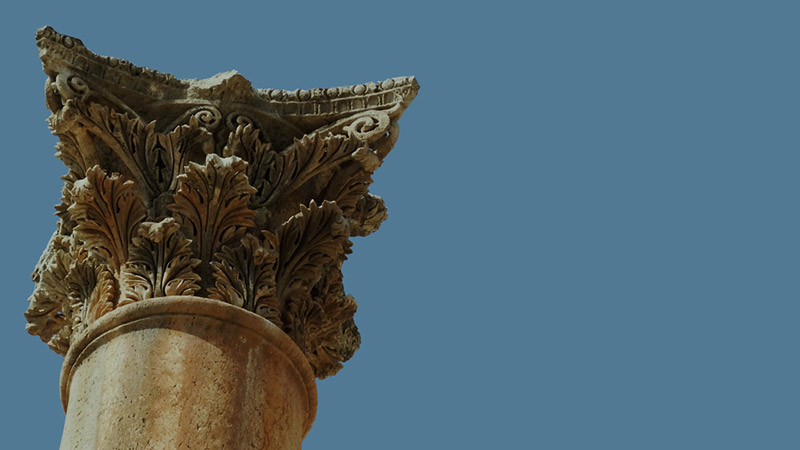
The Philistines
The Old Testament frequently mentions the Philistines, a pagan people who clashed with God's children in the Promised Land. The Bible itself provides many interesting facts about Philistine culture, and archaeological discoveries have added to our...
MORE

The Pilate Stone
While excavating the theater in 1961, archaeologists discovered this stone, which was being used as a step in a small stairway. When they had uncovered it, they found that it was in secondary use.Originally, it had been the dedication stone for a ...
MORE

The Plain of Gennesaret
This aerial view looks north over the fertile plain of Gennesaret. The road follows the route of the biblical Way of the Sea (Matt. 4:12-17). The modern-day Kibbutz Ginnosar is not far from what was Gennesaret in Jesus' time.In the distance along ...
MORE

The Promised Land
When the Israelites finally reached the edge of the Promised Land after wandering 40 years in the barren wilderness, they must have been overwhelmed by Canaan's fertility. To North Americans, it does not look particularly lush; but to desert nomad...
MORE

The Sea and the Abyss
The Sea of Galilee is beautiful, but its calm, peaceful setting does not present a complete picture of ancient people's feelings toward it: Many biblical images related to the sea had very negative connotations.Jews were not seafarers; they were d...
MORE

The Sea of Galilee
Rabbis of ancient times said, "The Lord has created seven seas, but the Sea of Galilee is his delight." Anyone who sees the Sea of Galilee understands this statement: The blue water, set against a green and brown background of surroundin...
MORE

The Seeds of Revolt
The Seeds of RevoltThe Seeds
After the Romans began their occupation of Judea in 64 BC, the Jews became divided on how to respond.The religious leaders, particularly the Pharisees, believed the Messiah would come from the Jewish people and make Is...
MORE

The Shephelah
Shephelah is a Hebrew word meaning "low" and is usually translated "lowlands" or "foothills." The term refers to a twelve to fifteen-mile wide region in Judea, comprised of foothills that are located between the coast...
MORE

The Sleeping Loft
Located on the second floor, this typical loft provided sleeping space for the family. The bed is a wooden frame with rope stretched over it. The mat over the bed provided some additional comfort. In poorer families, people often slept on mats on ...
MORE

The Temple at En Gedi
En Gedi is one of the oases around the Dead Sea. Sodom and Gomorrah would have looked like this oasis. High on the cliff above En Gedi, archaeologists discovered a pagan temple already old at the time of Abraham and Lot. Sodom and Gomorrah probabl...
MORE

The Temple Mount at Jerusalem
God despised the Canaanite high places where pagan worship was carried out. His orders to the Israelites were to destroy them. Yet God communicated with his people through their culture. He allowed them to establish high places where he could meet...
MORE



































